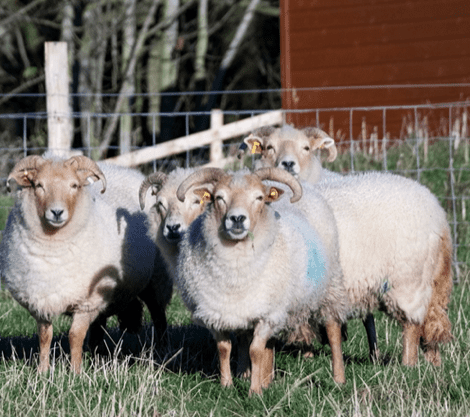In October last year we saw a debate on the state of Scotland’s local abattoir network at the Scottish Smallholders Festival. The room was packed with farmers and smallholders seriously concerned by the situation: we are now down to just over 20 abattoirs in Scotland following the closure of Downfield Farm Abattoir in Fife. The situation is now getting critical.
You can watch the debate here: https://www.youtube.com/watch?v=5I3Sa8KVawM
In 2020 the Government commissioned a report into Mobile Slaughter Units – you can read it here: https://www.gov.scot/publications/assessing-viability-sustainability-mobile-abattoirs-scotland/pages/12/
Also in 2020, the All Party working group on abattoirs published a UK wide study – https://apgaw.org/wp-content/uploads/2020/06/The-Future-for-Small-Abattoirs-in-the-UK.pdf
The message coming out is loud and clear. In order to have a thriving local food scene, Scotland needs to have a thriving and viable local abattoir network. To be clear, we are not talking here about intensive livestock enterprises, many of whom have their own supply chain and their own network which is anything but local, with some livestock being bred in Scotland and sold at markets here, to then be taken for slaughter and processing south of the border.

Any livestock keeper who wants to farm extensively or to high welfare standards operating in Scotland is facing the same issue. Here is the case in a bit more detail:
- One of the biggest challenges is finding an appropriate abattoir for their animals. Often if you are selling outside the conventional supply chain and trying to have financially viable businesses, there is a need to add value and find different markets, generally direct selling to the end consumer. A local abattoir network is therefore essential if these producers are going to transport their livestock to slaughter at a reasonable cost and maintain the high welfare standards expected by their customer base.
- Many larger abattoirs are single-species whereas smaller producers often work on a mixed farming system with several farmed species to make their farming business viable.
- Larger abattoirs often do not accept small numbers or carry out “private kills” where the farmer gets their own product back. Many will not kill cattle over thirty months (OTM), making it more difficult for farmers rearing slow-growing animals in a low-input system to maintain a viable business model.
- In some abattoirs and in some markets they use non-stun methods of slaughter, which many find unacceptable. Also, many sustainable farmers seek to make use of their animals “fifth quarter” – the hides, horn and offal – to add value to their product. Accessing this part of the animal requires a supportive and local abattoir network.
- Horned cattle and large pigs are also regularly excluded from abattoirs. Outdoor-reared pigs, which tend to have a thicker coat than indoor-reared animals are often not able to be processed and they are skinned, reducing their saleable value.
- In addition, not all abattoirs have organic certification.
So often all of these issues combine to reduce the viable options for local producers. It is important to recognise that most farmers, producers and consumers all want to use abattoirs that operate to the highest welfare standards. And those standards need to be enforced if they are to have any credibility; no one should object to that. Add to this the challenges now being faced by abattoir owners to find staff and veterinary oversight and we are facing a ‘perfect storm’.
What can we do:
- Encourage the Scottish Government and agencies involved in the food chain to keep the cost of compliance to the absolute minimum consistent with maintaining standards if the abattoir network is to survive. That means ensuring enforcement is proportionate and efficient, and that means making the best use of the available technology. Could remote monitoring be used without compromising welfare?
- Promote the investment into the local network, and for livestock keepers to use that network. The adage “use it or lose it” has never been more relevant.
- Encourage Government interest in ensuring that the existing network is able to meet the changing demands on it. In particular, more abattoirs need to be able to take small numbers of nonstandard animals and return the fifth quarter. This could extend to enabling abattoirs to provide related services such as butchery, processing and packing. There needs to be incentives for this to happen, this could be done through revenue payments in the same way farmers will be rewarded for sustainable initiatives.
- Lobby national and local Government to invest in the roll out of mobile and pop up abattoirs where there is no viable alternative. There will be challenges with water and with disposal of the by-products, but these have been overcome in other countries.
The most important thing we can all do is to ensure that this topic remains active – here at Appetite for Angus we are contacting as many livestock keepers as we can, but in particular working on behalf of our members to lobby and promote.